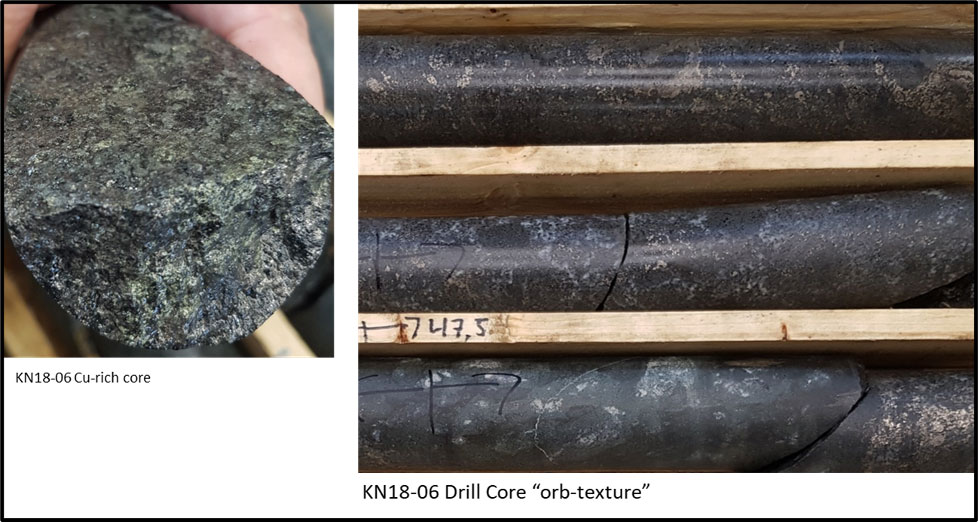In addition to the general overview provided below, please refer to presentations on our Homepage for the latest project developments and highlights. Permit or licence information is readily available in English at the Mining Inspector of Sweden's website: https://apps.sgu.se/kartvisare/kartvisare-mineralrattigheter.html
Gungnir’s gold and base metal exploration is focused in Sweden’s prolific Vasterbotten District which hosts 12 million ounces of gold delineated in existing and mined resources plus several past-producing and producing volcanogenic massive sulphide (VMS) base metal mines.
The Company's Knaften project is located at the south end of the "Gold Line" (or Knaften-Barsele Arc) which hosts a number of gold deposits including Faboliden and Svartliden (Dragon Mining), and the Barsele Gold-VMS project (Agnico Eagle JV). The Knaften property is 100% held, subject to an underlying royalty agreement, which includes partial interest to a related party, and a separate royalty option purchase agreement with Altius Minerals with one- and two-kilometre areas of interest, respectively.
Figure 1: Location Map, Knaften Property
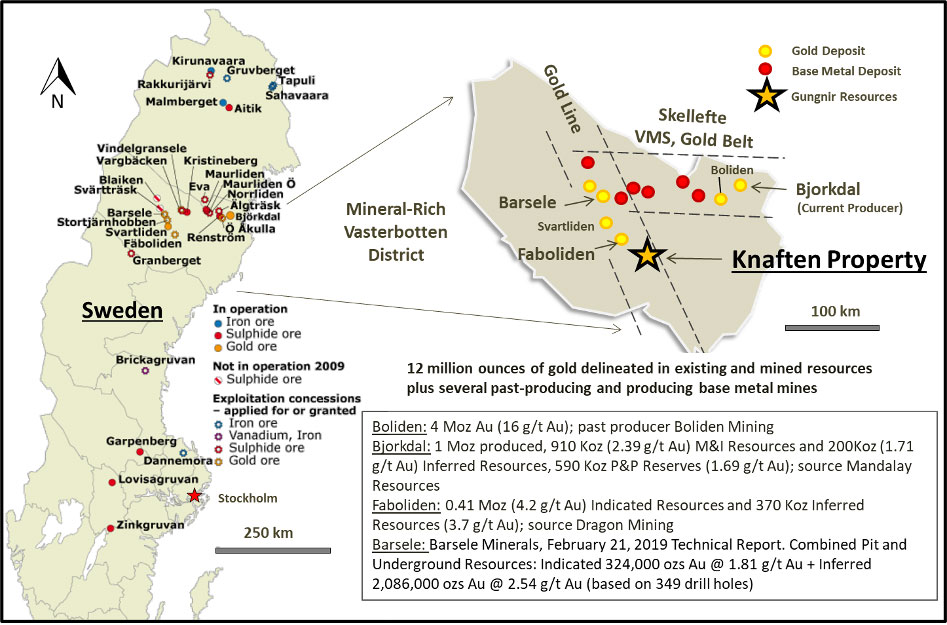
The target is the bedrock source(s) of the large Knaften gold-in-till anomaly (“Knaften anomaly”), one of the largest in Sweden. The bedrock source is believed to be partially identified, but based on the sheer size of the Knaften anomaly it is reasonable to expect more gold to be found in situ. Other gold-in-till anomalies in the region cover either current and past-producing gold mines or known gold resources. Sizeable intrusive-hosted gold deposits in the region include Barsele (Agnico Eagle/Barsele JV with more than 2 million ounces of gold) which is located along the same structural trend known as the Gold Line and also covers one of the sizeable gold-in-till anomalies.
Figure 2: Gold-in-till Anomalies in the Vasterbotten District
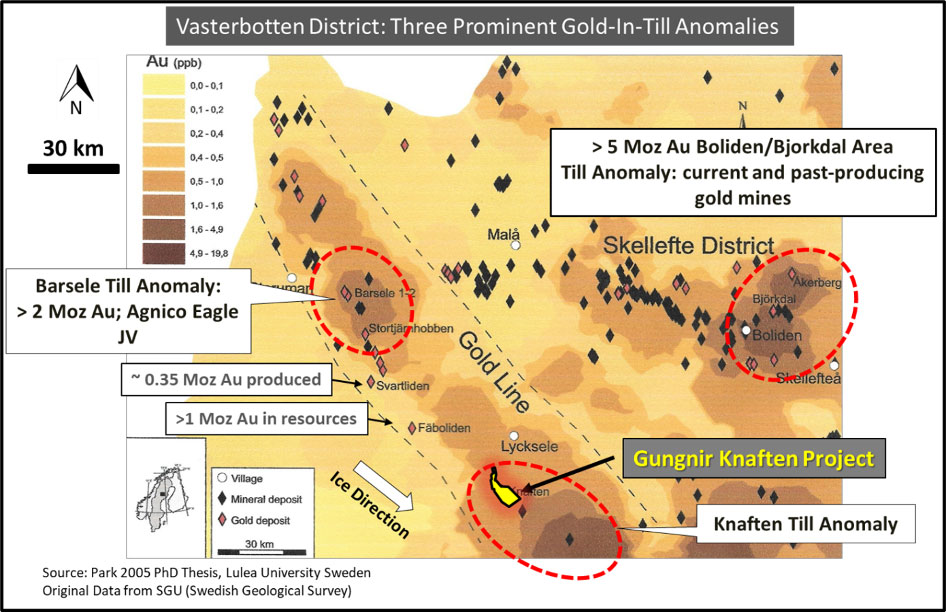
Since 2017, the Company has drilled 30 holes (5,600 metres) to the end of 2020. Gungnir has made several new discoveries and announced significant developments including discovery of a potentially sizeable intrusion-related gold system (Knaften 300), discovery of a new volcanogenic massive sulphide (VMS) zinc-copper base metal target, known as Rodingtrask, and discovery of a new copper-nickel target, all located on the Knaften project.
The Company recently expanded Knaften project to 4,887 hectares (or nearly 50 sq. km) to now cover the entire prospective quartz diorite intrusion (4 x 5 km) which is comparable in size to that hosting Agnico Eagle’s Barsele gold deposit located to the north along the same gold corridor. The intrusion has only been drill-tested along its very northern edge resulting in discovery of the Knaften 300 gold zone (“Knaften 300”), results include:
- 14.07 g/t Au over 4.25 m (from 138.75 to 143.00 m) in hole KN19-06
- includes 59.6 g/t Au over 1.00 m - 5.39 g/t Au over 2.00 m (from 98.00 to 100.00 m) in hole KN19-09
- 3.45 g/t Au over 10.75 m (from 67.05 to 77.80 m) in hole 96009
- 3.20 g/t Au over 10.00 m (from 83.50 to 93.50 m) in hole 200707
- 2.92 g/t Au over 13.00 m (from 81.5 to 94.50 m) in re-sample 200707
- 3.11 g/t Au over 8.00 m (from 135.80 to 143.80 m) in hole 200714
- 2.13 g/t Au over 14.45 m (from 55.00 to 69.45 m) in hole KNA01001
- 2.01 g/t Au over 6.70 m (from 190.50 to 197.20 m) in hole 200710
- 2.89 g/t Au over 5.00 m (from 118.80 to 123.80 m) in hole 200715
Figure 3: Knaften project highlights
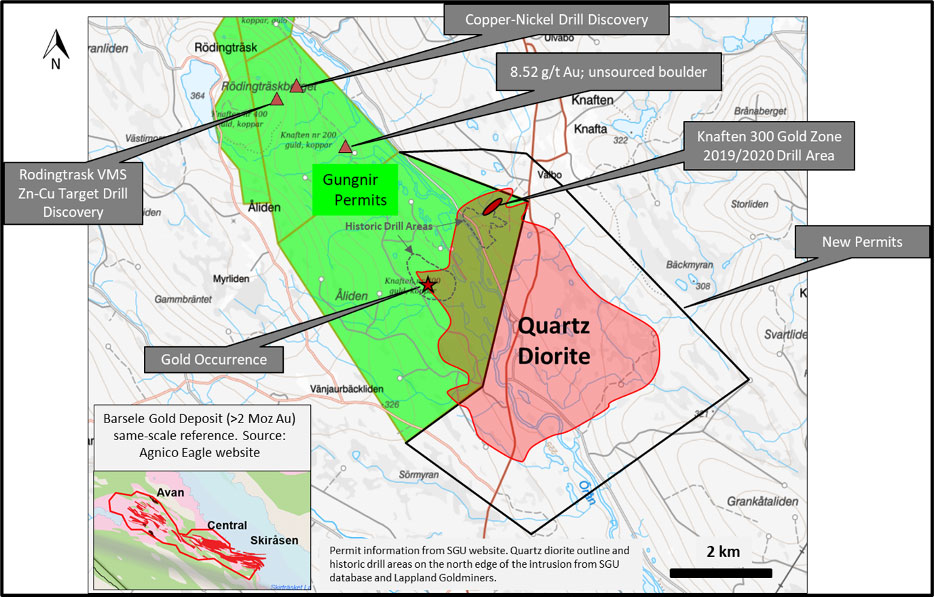
Figure 4: Knaften 300 cross-section showing stacked gold system, open in all directions
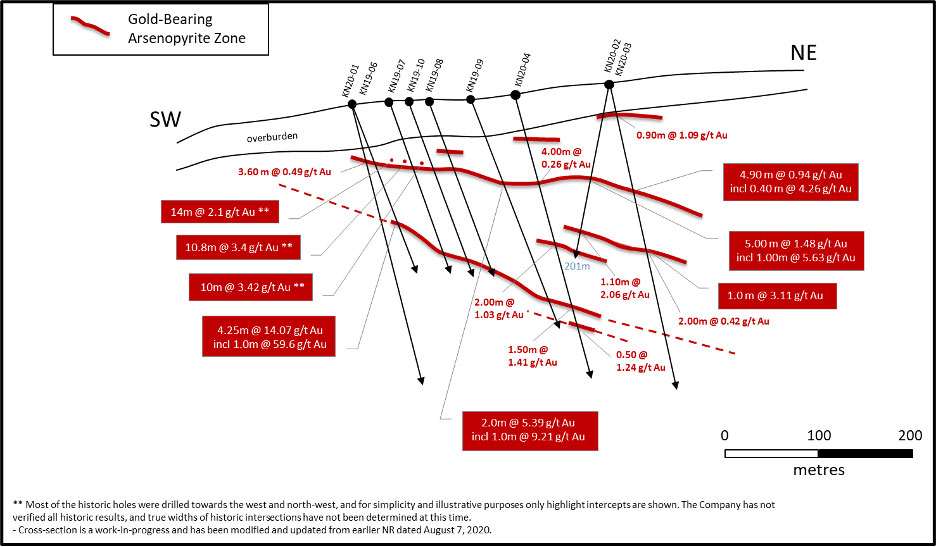
Figure 5: Knaften 300 Gold Zone drill core; gold is associated with arsenopyrite
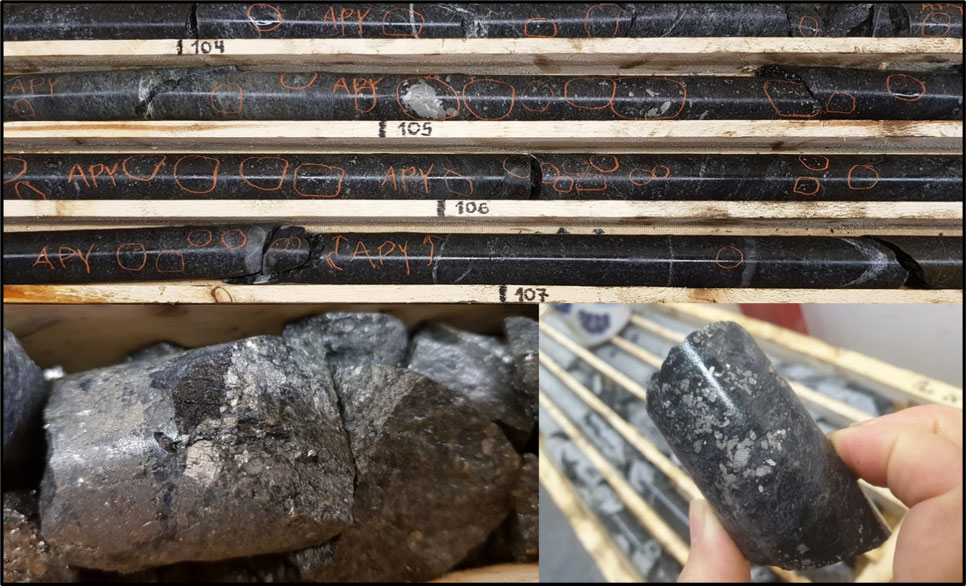
Figure 6: Other gold targets on the Knaften property
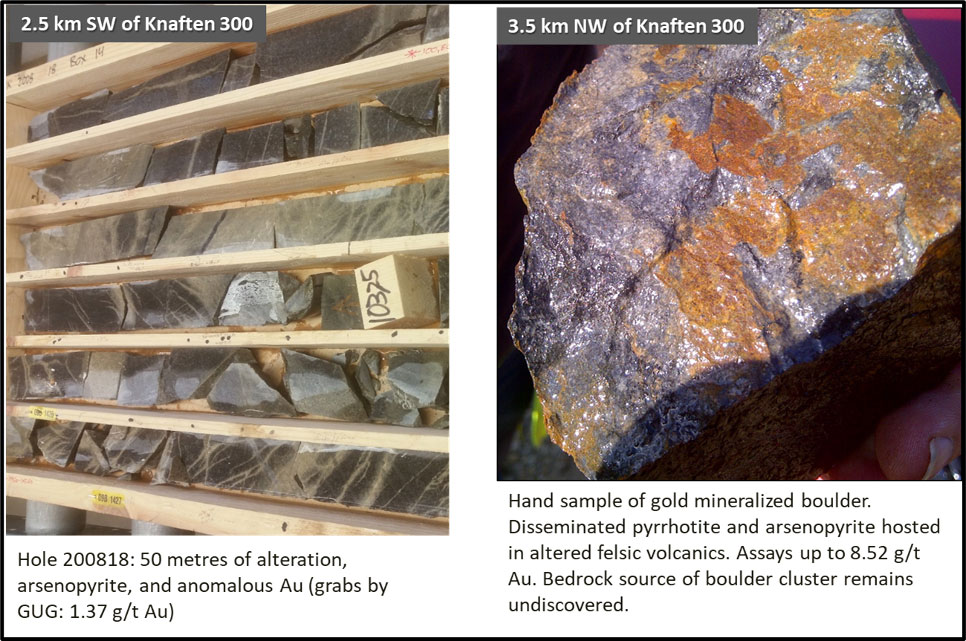
The Rodingtrask is a new VMS target discovery outside the traditional Skellefte belt in northern Sweden with similar age to older VMS deposits in Finland. 2018 drilling encountered widespread metal-enrichment (Zn, Cu, Ag) in core lengths > 100 metres in host conglomerate (see NR’s Aug/Oct/Nov 2018). Only 9 holes have tested this target, all believed to be into the edges or halo of a large hydrothermal VMS system. So far mineralization, alteration and marker horizon defined over a strike length of 200 metres. Known mineralization is centred on a magnetic high anomaly; several similar magnetic highs clustered on >10 km trend. The current working model is a mafic volcanic-sedimentary VMS setting. The goal now is to locate the core of it targeting higher grade massive sulphide mineralization.
Figure 7: Rodingtrask VMS target setting comparison
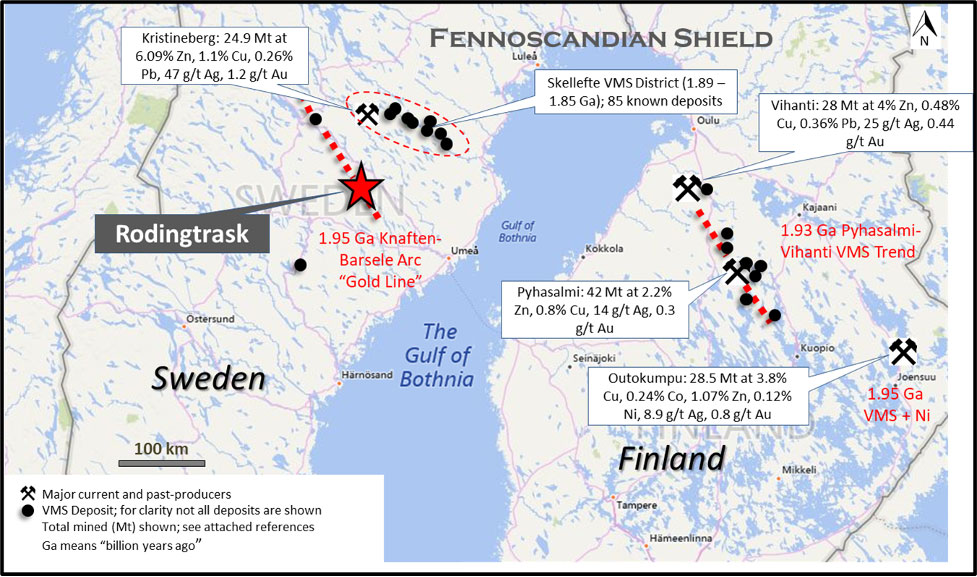
Figure 8: Stratigraphic setting of Rodingtrask (red) compared to Skelleftea Belt VMS deposits (green)
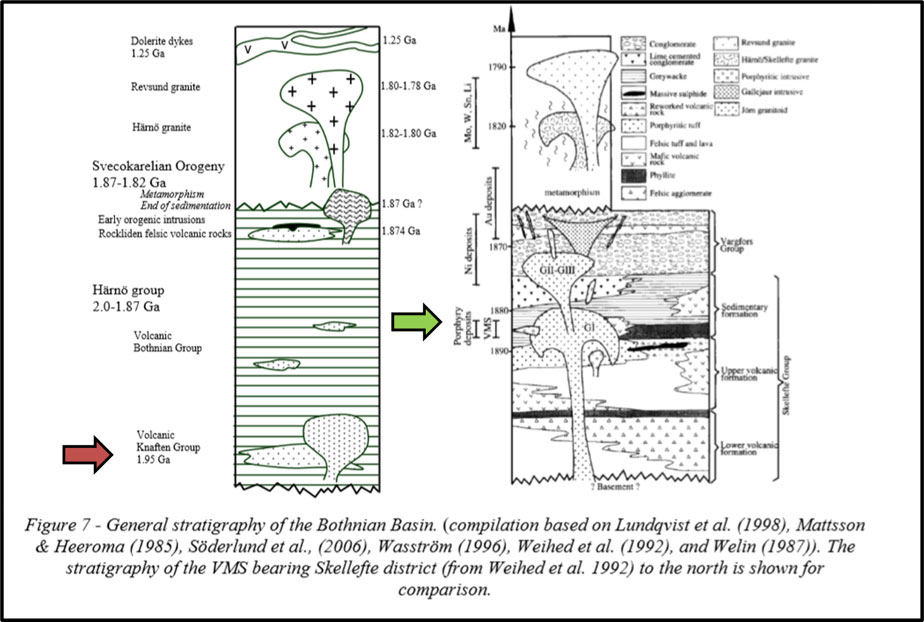
Figure 9: Rodingtrask VMS core photos
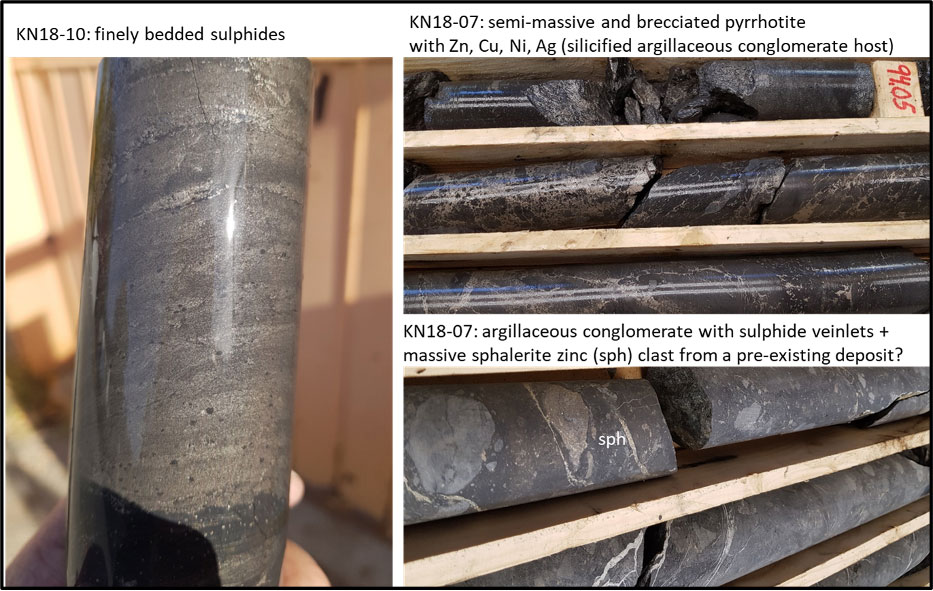
Figure 10: Rodingtrask VMS core photos; marker “exhalite”
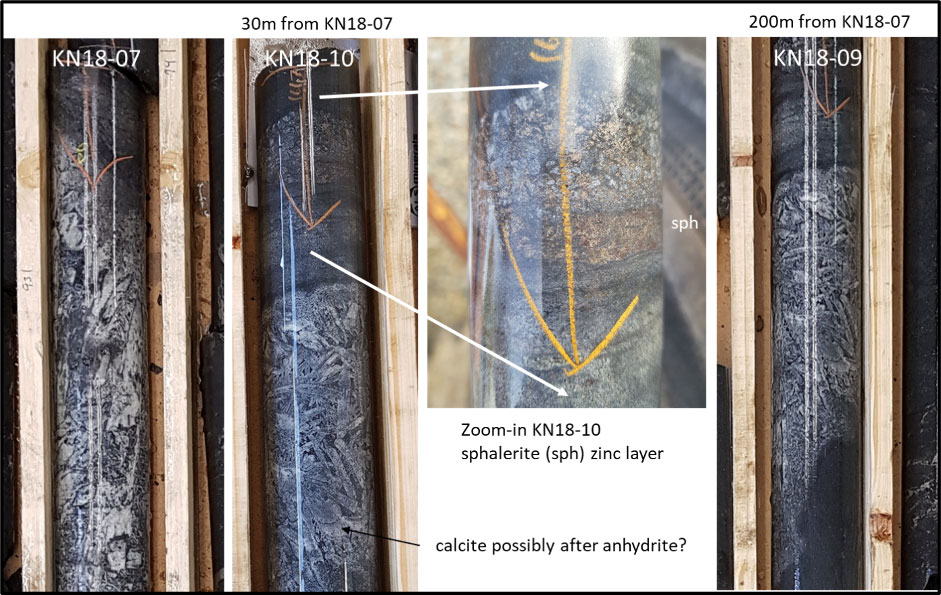
Copper-nickel mineralization on Knaften is a new discovery made by Gungnir in 2017, with a second hole drilled near-by in 2018 cutting magmatic sulphides assaying 0.38% CuEq over a core length of 14.4m (see NR dated Oct 4, 2018). Near-surface intersections are located 400 metres east of the Rodingtrask target. Mineralization consists of disseminated, blebby, patchy and erratically banded pyrrhotite with lesser chalcopyrite. Host rock is gabbro including vari-and orbicular textures which are documented textural styles closely associated with potential massive sulphide accumulations. Blue sky potential on this target as well with only 2 holes into the mineralized system.
Figure 11: Copper-nickel discovery
